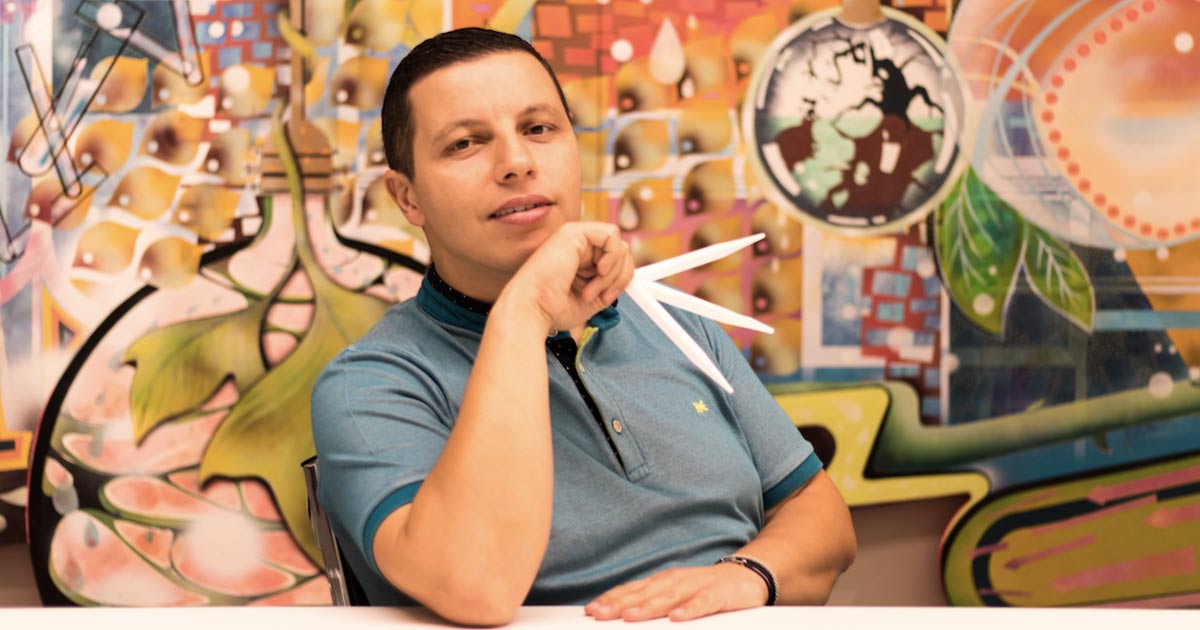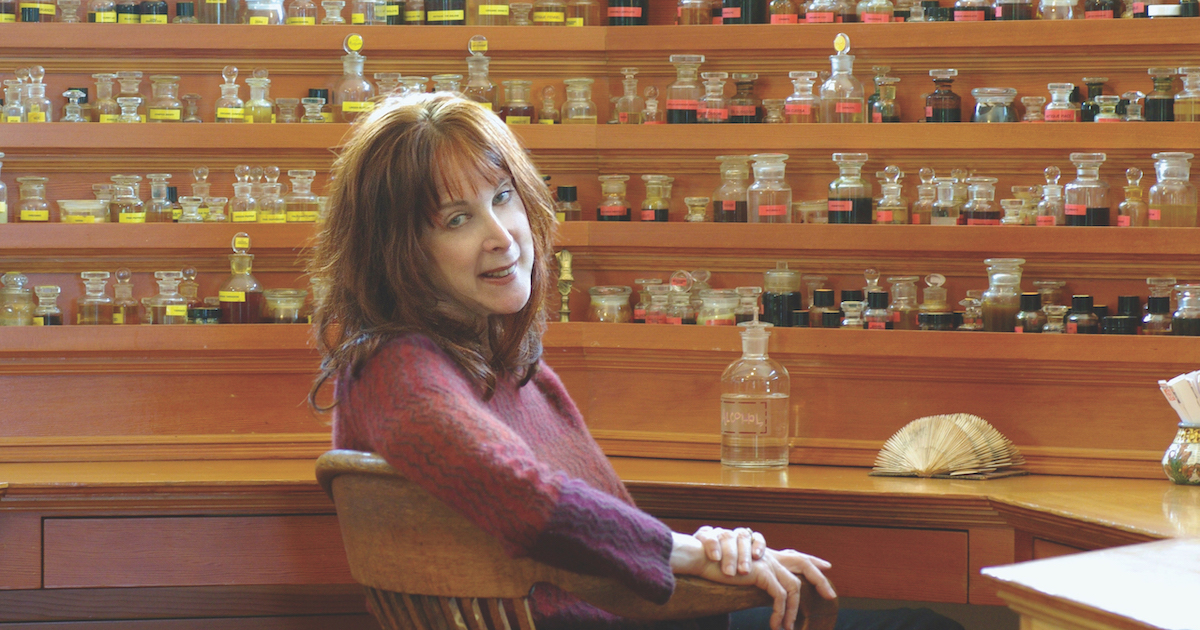Cette publication est également disponible en :
![]() Français
Français
Serge de Oliveira joined Robertet as an assistant perfumer before being appointed perfumer in 2013, first in Grasse and then in Paris, where he has been working on fine and functional fragrances alike since 2019. He has created a whole host of natural compositions, including Néroli & Petitgrain printanier, Amaretto & Framboise poudrée and Tonka & Amande absolue for 100Bon, Silence des Calanques, Rouge confidence, Elixiris and Blooming summer for Aemium, L’Ivrée bleue and Le Passant for Ormaie, the solid perfumes Santal, Vanille et Fleur d’oranger for Nolença, as well as the fragrance for Ultra Doux Provençal honey and sweet almond replenishing shower gel and the Unbottled brand’s solid shampoos and soaps. In conventional perfumery, he is the author of Bleu Abysse, Rose absolument and Rose par essence for Parfums de Rosine, 903, YMC for Bon Parfumeur and Cuir superbe for Nino Amaddeo.
How did you end up in natural perfumery?
It happened very naturally. When I started working at Robertet eight years ago, I immediately began composing natural perfumes, mainly for Scandinavian countries which, at the time, were well ahead of France in the field. As the company I work for is known for the quality and variety of its natural raw materials, brands that want to produce natural fragrances logically call on us, and we receive a lot of briefs in this context. A few years ago there were fewer natural projects, so Robertet put young perfumers like me to work on this kind of task, and I can now say that I’ve got the touch!
The notion of natural perfume is defined in many different ways. Which labels are the most requested by your clients?
Lots of them ask for the Cosmos Organic label, which is the most restrictive. It authorises essential oils, CO2 extracts, isolates and some resinoids in formulas, but not absolutes, which are obtained using petrochemical solvents. On top of that, at least 20% of the ingredients in the formula must be certified organic (and 95% of the plant-based ingredients). It seems that they find it easier to sell an organically certified product rather than one that is simply 100% natural: it has a more appealing image for consumers. At the other end of the spectrum, the much more flexible ISO16128 standard is becoming increasingly popular. It makes it easy to claim a high percentage of natural ingredients because the alcohol and water in the bottle are taken into account rather than just the concentrate. It allows naturally derived ingredients, i.e. obtained from a natural raw material using a chemical process, if they are made up of more than 50% renewable carbon. By paving the way for Iso E Super and certain musks like Ambrettolide and Helvettolide, this really broadens the palette, and can represent an interesting compromise for major brands that want to release a natural fragrance with fewer constraints, and that deviates as little as possible from conventional codes.
How many raw materials do you have at your disposal when you formulate natural fragrances?
We start with 1,330 raw materials in conventional perfumery. We still have 60% of this palette with ISO 16128, 40% with ISO 9235 and 20% with Cosmos. Admittedly, the range is smaller in natural perfumery, but it has expanded considerably in recent years thanks to new isolates. At Robertet, we’ve got a huge amount of them that our competitors don’t yet have in their palette. And we’re continuing to develop new raw materials: for example, we recently added an ingredient with the scent of lily.
Are natural and synthetic materials processed differently?
Natural raw materials have a great many facets, whereas a molecule like Hedione, for example, is much more one-dimensional. When I formulate natural fragrances, I try to tame these facets, to work on the comfort and roundness aspects, to add an elegant dimension without accentuating the roughness. The aim is that the client does not feel that it is natural, because most of them want natural perfumes that are just like conventional fragrances! Natural formulas are worked on differently and evaluated differently: they require more maceration, the raw materials must harmonise in the formula, they have to live together. When we can, we wait two to five days before sending our trials to a client, and we warn them that it takes time, that they should get a feel for it after a few days, or even after a week.
Do natural fragrances move you more than others?
They don’t move me more, but they are a challenge that I enjoy. They require a lot of work, trials, adjustments; formulating them is more difficult, more time-consuming, but also more challenging and interesting, and allows me to learn every day. I realise that a certain combination of isolates will produce a new accord: for example, by combining phenylethyl alcohol and basil, I obtain a hyacinth accord. I’m always looking for more staying power, by heightening the base notes or the blooming, i.e. giving the top notes a strong impact which is very important for winning over buyers, thanks to aldehyde isolates, which we obtain from citrus fruits and use to boost the other ingredients.
What are the notes or accords that are currently difficult, if not impossible, to achieve naturally?
We can produce lots of notes: citrus, floral, spicy, woody, or even fruity floral, with tagetes, davana and isolates like C14 and C18 aldehydes, which are actually lactones. But we don’t have any musky notes, except for ambrette, which is very expensive and can’t be used like synthetic musks. We can still achieve similar effects, using vanillin or raspberry to give a powdery feel, or a touch of maltol to provide roundness. On the other hand, there is no natural equivalent for the impact of woody amber notes – not right now anyway, as natural perfumery is evolving daily. You can use sandalwood, cedar or vetiver, but you won’t get the same effect
Do you work with different concentrations in natural and conventional perfumery?
The concentration depends largely on the brand’s budget, since the price of the concentrate is much higher when it contains only natural raw materials, which are often ten times and sometimes up to a thousand times more expensive than synthetics. Beyond the price considerations, it’s also important to know that too high a concentration of natural ingredients risks smothering the fragrance.
Natural perfumery is booming. How do you see its future?
I’d like it to become dominant. It’s a perfumery that has evolved a lot, that has become more interesting, and for me it represents the future – even though I also like synthetics and do create conventional fragrances. I’m convinced that the big companies will start to turn to naturals: it’s already the case at L’Oréal for certain hygiene products, and it won’t be long before fine perfumery follows. From this standpoint, the choice of 100% naturally derived ingredients can represent a good compromise.
—
Natural perfumers – Summary
- Introduction, by Jeanne Doré
- Hiram Green: “If people want to buy my perfumes, it should be because they like their smell“
- Caroline Dumur: “Without synthetics, you have to learn to formulate differently”
- Delphine Thierry: “To formulate 100% natural perfumes, I set aside almost everything I’ve learned so far”
- Isabelle Doyen and Camille Goutal: “For us, 100% natural is a perfumer’s challenge rather than a marketing position.”
- Serge de Oliveira: “Most clients want natural perfumes that are just like conventional fragrances”
- Irène Farmachidi: “In 100% natural perfumery, we formulate by using paraphrases, it’s like a game”
- Mandy Aftel: “Mixing a bunch of natural ingredients in a bottle does not produce a perfume”
- Our selection of natural perfumes
- The many facets of natural perfumery
- Natural perfumes: conclusion and a few thoughts





Comments